A Climber’s Life
It’s okay to ‘choke the cobra’ on a regular basis.
Trad climbers are weak. Sport climbers are wimps. Boulderers are lazy. Aid climbers are fat, and ice climbers are batty. This is all true.
I had no idea what sport climbing or any of that was when I was 11 years old. It was February 1993 and I was still reveling in my mom’s Christmas gift to me – basic climbing lessons at the Boulder Rock Club. The gift certificate was folded into an issue of Climbing magazine. The cover featured Joe Josephson splayed across a smear of Canadian ice. Near the back of the issue was a photo of Bobbi Bensman on “Fluff Boy” (5.13c), a famous sport climb in Rifle, Colo. From the beginning I gravitated to rock more than ice, but it was all climbing to me, and I loved climbing. I studied the mag from cover to cover, ads and all.
In those days, children were not as common at the crags. Even in the old Boulder Rock Club, kids had to be at least 11 years old and of a certain size before they were permitted to use the gym. (These days there are climbing shoes for toddlers.) I was also an only-child and there were no siblings to join me. Fortunately, my mom had a couple friends who were climbers.
Kim and Carlton were a childless couple who wanted a child. My mom and I lived near them in Lyons, Colo., and they took me to Paradise Rock Gym in Denver twice a month. They were sport climbers and wore Lycra tights. For a while I thought I wanted a pair of neon tights, too, though the idea always felt funny. I couldn’t imagine my knob-kneed pre-teen legs looking good in tights, but I also wanted to fit in; the gym world certainly reflected the one I saw in magazines. (Thank God I missed that fashion bullet – it came so close I can still feel it zipping between my legs!)
Then my older cousin, Ryan, started taking me out. A protégé of the famous hard man Roger Briggs, Ryan guided me up some of the finest climbs. He took me up the red, lichen-spackled faces in Eldorado Canyon near Boulder, Colo., and up the Grand Teton in Wyoming. By then, Kim and Carlton had split up and moved away, and I’d lost my connection to the sport-climbing world. Trad was everything.
“Sport climbing is neither!” Ryan joked. The words tattooed my mind and I echoed the sentiment like scripture for years. In those days a bolt war was festering and I knew which side I was on. At last I knew where I belonged, that I was rad and so was trad.
When I was 14, I visited Rifle Mountain Park for my first time. Rifle was a sport-climbing mecca but I’d never heard of it. My mom and I had just moved to a town close to Rifle and my old life was uprooted. Rocks were in all directions, but it was all horrible choss – nothing I wanted to climb. Where were the solid, sweeping faces of Boulder and Rocky Mountain National Park? That June my mom met the girlfriend of a Rifle badass, John Dunn. JD was one of the core developers of Rifle. For a wage, he’d take squirts like me out for a few hours of coaching, and once again my mom gave me the gift of climbing despite her fear of the sport.
“I just want you to learn the right way,” she said.
I showed up for my first climbing lesson with JD and he laughed when I pulled my most prized possession out of the bag – a rack with a set of chocks and four cams.
“Whoa, a trad man! You won’t need that here,” he said.
He rope-gunned a 5.8 called “Gook-a-nook.” I’d flashed 5.8s in Eldo but “Gook-a-nook” was something completely different. My arms had never been so pumped! The rock under my shoes had never been so slippery! I finally managed to send on my third top-rope, but just barely.
As we walked over to a different wall, I recognized a line of quickdraws dangling out the center of a gnarly cave. Overhanging 30 feet in 60, “Fluff Boy” looked like an impossible ceiling. I knew people climbed it, but how?
JD took me around to some other 5.9 butt-kickers. Suddenly I had an inkling of respect for sport climbing, especially after watching JD dyno his way up “Spray-a-Thon,” another mega-steep 5.13c. It looked like magic. I couldn’t imagine levitating out a cave on finger pockets like he had.
Too soon, I forgot the most important aspects of that early Rifle experience. I retreated into my cocoon of delusional trad-is-radness. I knew in my heart that sport climbing was difficult, and that I might never be good at it. It would be another four years before I revisited Rifle, and another ten before I fully embraced it.
In the meantime, I pushed my limits above hand-placed gear and even while free soloing. I took some spectacular, gear ripping 40-footers, but nine times out of ten, everything went according to plan. It’s amusing to consider that when I’m trad climbing, I’m constantly terrified and never fall; but when I’m sport climbing I’m constantly falling and never terrified. In my trad phase, I hardly ever fell.
Yet I couldn’t quite break into 5.12, or even 5.11+ for that matter. At that grade, gear routes become a different animal. Forget dancing through cruxes balanced upright over your feet. At 5.12, a climber has to crank some boulder problems above his gear if he wants to send. I couldn’t stretch out of my comfort zone. I spent my energy sewing it up only to hang on the rope. For several years, 5.12 was a looming roof over my head. Clearly it was possible, but there was something missing in my attack. The answer? Sport climbing.
After graduating college in 2005, I landed an internship at Rock and Ice magazine in Carbondale, Colo. That summer, my new friends reintroduced me to possibility. No longer committing my life to brass nuts in tiny fissures, I could whip indiscriminately (well, almost) onto bolts near my waist; I could learn in a safe environment. When you spend eight hours a day, two days a week climbing at your limit, you also get much stronger.
In the fall of 2006, I simul-climbed the 13-pitch “Scenic Cruise” (5.10d) in the Black Canyon of the Gunnison with a friend. It was my first time climbing in the Black and I giggled to discover how easy it was to hang out on 5.10 finger locks! We left the car at 11 a.m., sipped beer on the rim and drove home before sunset. Without sport climbing, it would have taken me a few more years to reach that level.
There was still something missing, however: bouldering. By 2007, I was redpointing 5.13b but couldn’t quite manage 13c, no matter how often I flogged my project. Lately, I’ve learned to love bouldering and now I’m coming close to sending my first 13d. I’m consistently onsighting 5.12 trad as well, among other things. As far as world standards go, this stuff isn’t much to brag about. Nonetheless, there’s no denying I’m climbing better than ever as a result of embracing both sport climbing and bouldering.
At 31 years old, I have wasted about 10 years of my 20-year climbing career working my strengths. It is only in the last five years that I’ve come to enjoy learning my weaknesses, which are many. It’s hard to do. It’s frustrating and unflattering to splat on my butt when I could do something at a higher grade. The more I work on these gaps in experience, however, the more the world opens up.
I’ve found this to be especially true in life overall. In fact, I’m climbing stronger now than when I climbed four days a week year-round. Lately I probably climb about a third as much, but I’m sending more hard routes.
What have I been doing with my non-climbing time? I’ve been building a career and a solid relationship with a woman. I’ve helped raise a dog and a few vegetable gardens. Basically, I’m happier and more successful when everything is balanced, as opposed to climbing all the time.
So yeah, trad climbers are weak. Sport climbers are wimps, and boulderers are lazy. Aid climbers are fat and ice climbers are batty. Do all those things, however, and what are you? Badass, that’s what.
I’m a wannabe badass, but at least I’ve learned enough not to discount one style over another. It’s all climbing and I love it. That’s as pure as it gets. After all this time, I’m finally back where I started, and that’s a good thing.
Derek Franz writes this column for SplitterChoss.com on the first Monday of every month. If you’re still wondering what “choke the cobra” means, check out Matt Samet’s “Climbing Dictionary.”
5 Responses to A Climber’s Life
Bulldog Creek Dog Walk (IV WI 4+)
Hayden Carpenter and Tom Bohanon recently repeated an obscure ice climb on the south side of Mt Sopris. Given a brief mention in Jack Robert’s ice guide, Bulldog Creek Walk is described as being 100 meters of WI 4. What they found was seven pitches of ice in a remote setting that makes for one […]
Connect with Us





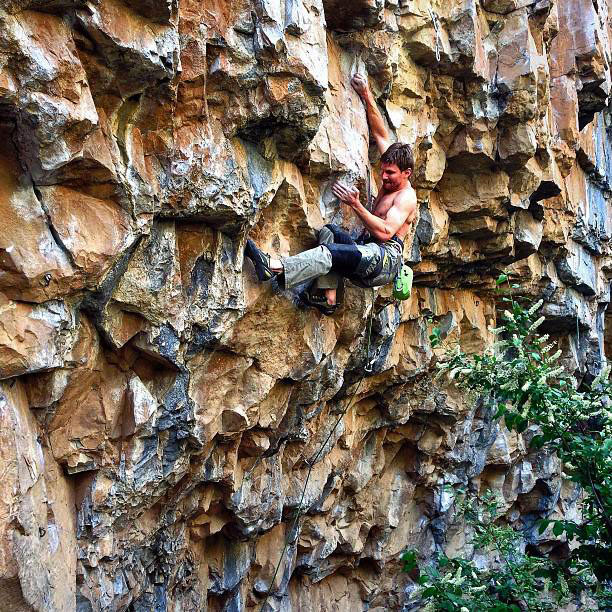

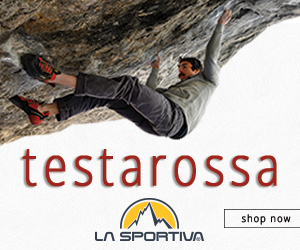

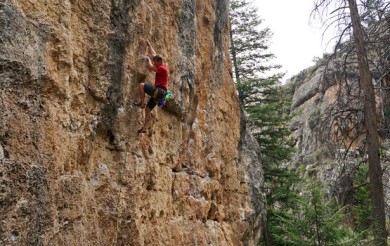
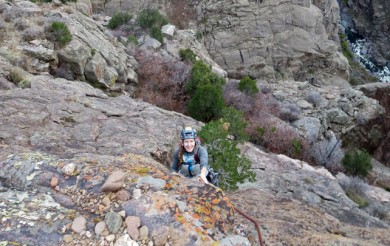
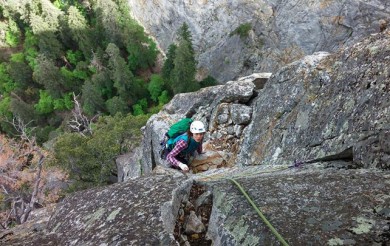
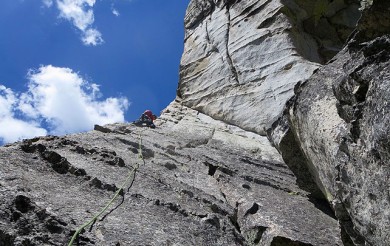



Great article. I’m just about three years into climbing, but also 31. I’m balancing a toddler and a wife and career, but I love any time I can get out to the crag. I really like the way you look at it, and it reminds me of my two climbing mantras: the best climber is the one having the most fun, and I climb in a way that I can climb forever.
Thanks for the read.
Thanks, Tucker. Glad you enjoyed it. Climb on!
3rd message!!! with no response!!! Come on, Derek!!!
If you don’t want the answer displayed in the comment section of your article, please email me the answer:
WHAT’S “choke the cobra” MEAN?
As previously stated, I could not get an answer via Matt Samet’s “Climbing Dictionary.”
Anxiously awaiting your response!!!
LaRue
larue.bolo@yahoo.com
Hi, LaRue. Sorry for the delay, but this is the first I’ve seen of your question. According to my copy of “The Climbing Dictionary,” here is the definition of “choke the cobra (v): To grab a quickdraw’s nylon runner (dog bone) so you can clip the rope into the bottom carabiner; usually done at a difficult clip you’re too pumped or scared to make. Origin: Red River Gorge/Southeastern sport climbers, as overheard by visiting Coloradans in 2009.”
Tkx